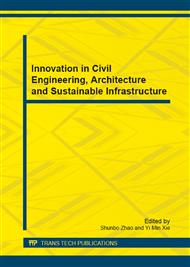p.826
p.833
p.838
p.844
p.848
p.852
p.856
p.860
p.864
Feasibility of Vs Liquefication Evaluation Methods by Bachu Xinjiang Earthquake Data
Abstract:
A discrimination model for soil liquefaction is established by analyzing the liquefied and non-liquefied sites in the Bachu Xinjiang earthquake, based on 44 shear wave velocity data. One of them is based on the Code for seismic design of buildings, which is a linear model. The model is brief and convenient, while the evaluation success rate is 80%. But compared with the nonlinear model, the linear model is not advanced enough. The other model is based on probability analysis, and the evaluation success rate can reach up to 93%. And the discrimination results are high in reliability rely on real data analysis.
Info:
Periodical:
Pages:
848-851
Citation:
Online since:
November 2012
Authors:
Price:
Сopyright:
© 2012 Trans Tech Publications Ltd. All Rights Reserved
Share:
Citation:


